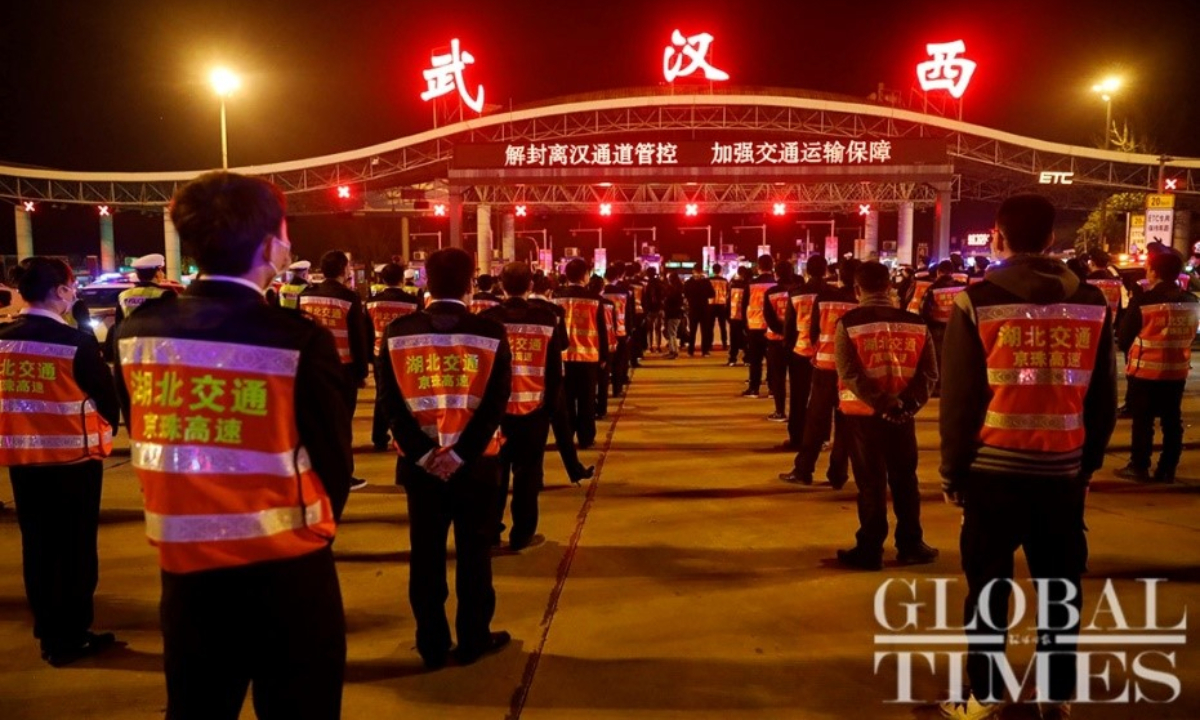Editor's Note:
During the past three years, China has launched a war against COVID-19, effectively handled more than 100 cluster outbreaks, and protected the lives and health of more than 1.4 billion people to the greatest extent.
Confronted with epidemic uncertainties, China has always been putting people's lives and health first, adapting its COVID response in light of the evolving situation. These efforts have bought precious time for a smooth transition in its COVID response.
Meanwhile, China has effectively coordinated COVID-19 prevention and control with economic and social development, with positive results seen and new achievements being consolidated, making it a reliable and important driving force of global economic growth.
During the early days of 2023, with sounder COVID-19 response measures in effect, domestic demand increased, consumption was boosted, and production resumed rapidly, as consumer service industries recovered and the hustle and bustle of people's lives returned to full swing.
Just as President Xi Jinping said in his 2023 New Year Address: "We have now entered a new phase of COVID response where tough challenges remain. Everyone is holding on with great fortitude, and the light of hope is right in front of us."
In this photo gallery, the Global Times has recorded the past three years with some memorable photos. The special photo story has two parts. This is the first part, telling that despite the optimization of China’s epidemic response, one thing remains unchanged: China has always put the people’s interests first – nothing is more precious than people’s lives.
 As the virus wreaked havoc in Central China's Hubei Province and particularly in its capital city Wuhan, the authorities ordered the shutting of exit channels from the capital city and the province. Around 10 million people in the city were placed under an unprecedented lockdown. Yet the move was instrumental in stemming the spread. Aerial photo taken on January 26, 2019 shows Yanjiang Avenue in Wuhan. Photo: Xinhua
As the virus wreaked havoc in Central China's Hubei Province and particularly in its capital city Wuhan, the authorities ordered the shutting of exit channels from the capital city and the province. Around 10 million people in the city were placed under an unprecedented lockdown. Yet the move was instrumental in stemming the spread. Aerial photo taken on January 26, 2019 shows Yanjiang Avenue in Wuhan. Photo: Xinhua 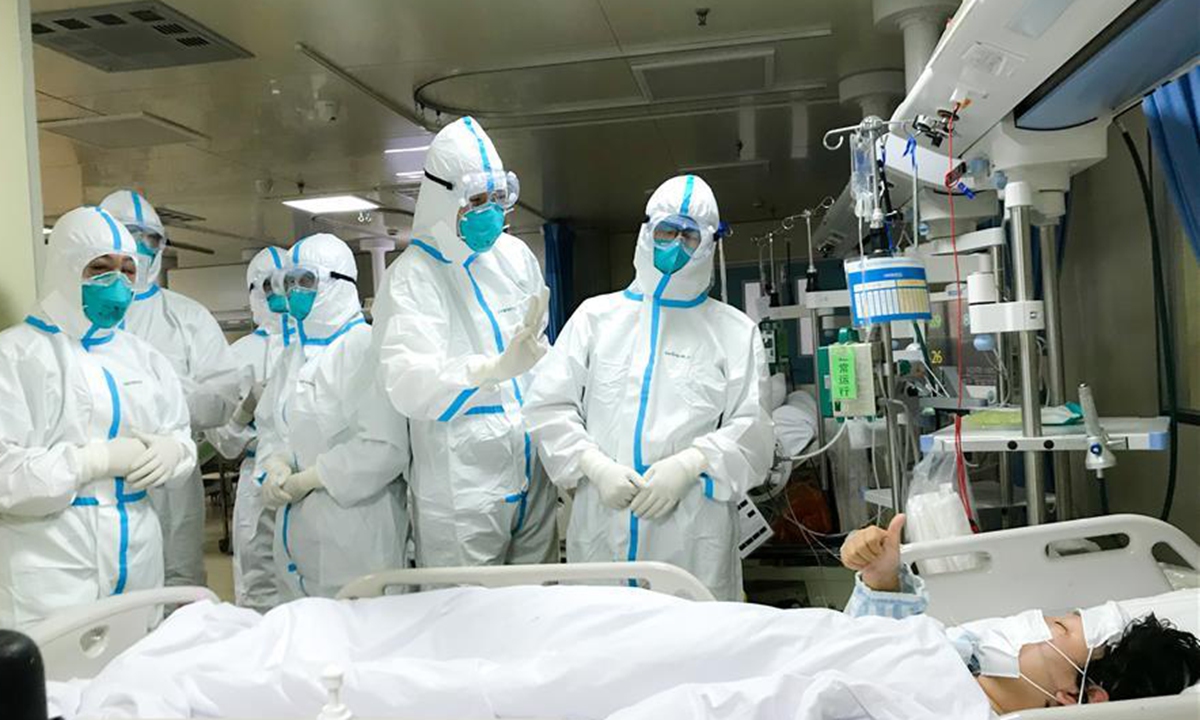 Medical team from the PLA Naval Medical University helped Hankou Hospital in Wuhan in January 2020. The photo shows members of the medical team of the PLA Naval Medical University being thanked by a patient at Hankou Hospital in Wuhan, Central China's Hubei Province, on January 27, 2020. Photo: Xinhua
Medical team from the PLA Naval Medical University helped Hankou Hospital in Wuhan in January 2020. The photo shows members of the medical team of the PLA Naval Medical University being thanked by a patient at Hankou Hospital in Wuhan, Central China's Hubei Province, on January 27, 2020. Photo: Xinhua 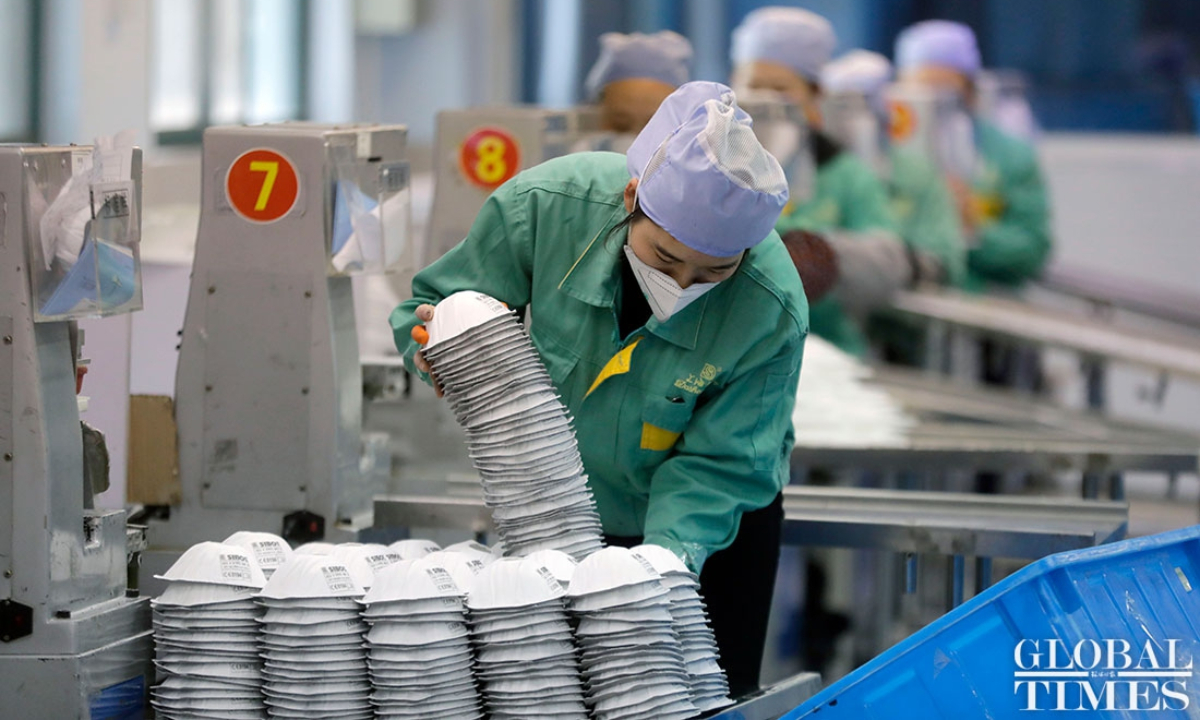 Shanghai Factory running 24 hours a day to produce masks: The production line at Shanghai Dasheng Health Products Manufacture Co has been running 24 hours a day start from January 31st, 2020 to produce protective facial masks amid a shortage of medical equipment in China. Photo: Yang Hui/GT
Shanghai Factory running 24 hours a day to produce masks: The production line at Shanghai Dasheng Health Products Manufacture Co has been running 24 hours a day start from January 31st, 2020 to produce protective facial masks amid a shortage of medical equipment in China. Photo: Yang Hui/GT 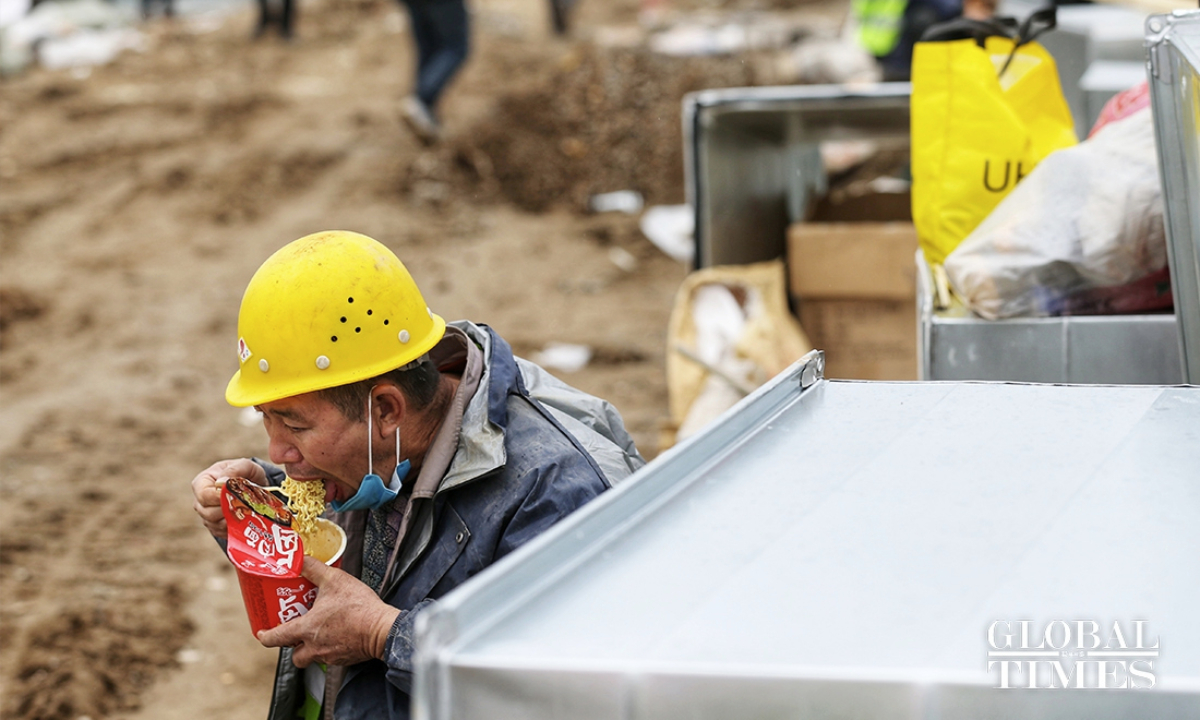 The ‘race against time’: With more than 4,000 workers, thousands of machines, and 10 days and nights working, the first special coronavirus hospital, Huoshenshan Hospital, in Wuhan, Hubei Province has been completed on February 2, 2020. A worker eats instant noodles at the construction site of Huoshenshan Hospital. Photo: Cui Meng/GT
The ‘race against time’: With more than 4,000 workers, thousands of machines, and 10 days and nights working, the first special coronavirus hospital, Huoshenshan Hospital, in Wuhan, Hubei Province has been completed on February 2, 2020. A worker eats instant noodles at the construction site of Huoshenshan Hospital. Photo: Cui Meng/GT 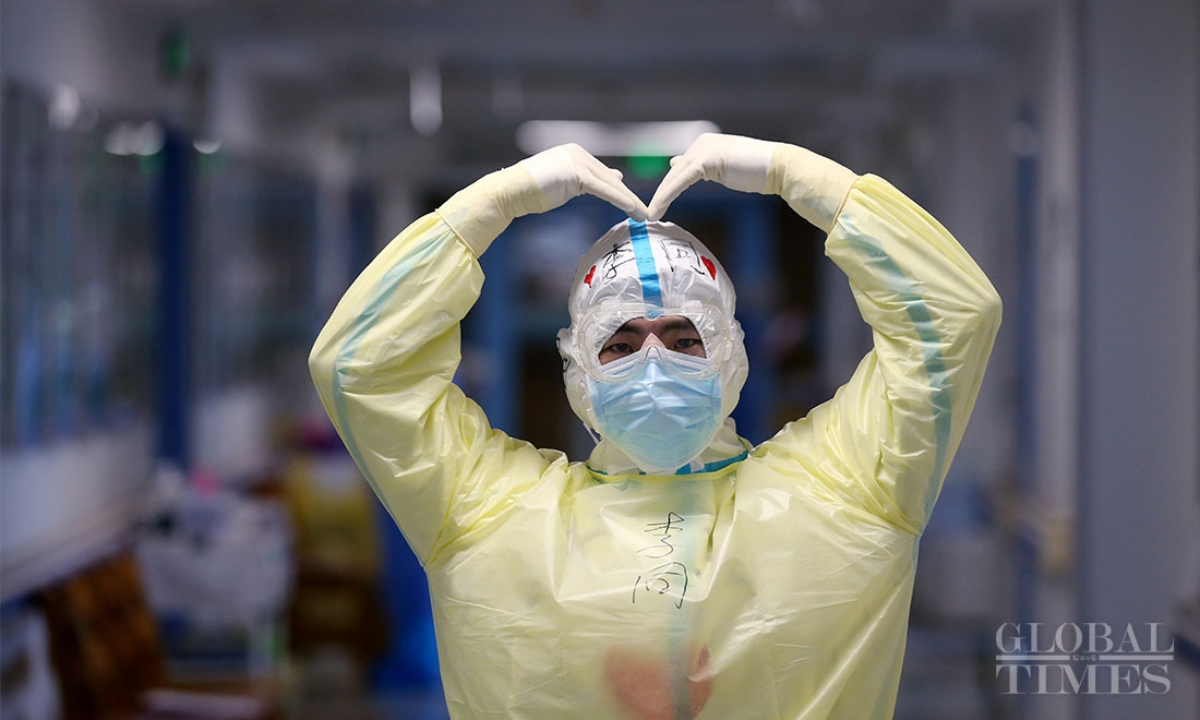 Medical personnel express longing for Valentine's Day in Wuhan: Medical personnel from Peking Union Medical College Hospital at the ICU of Wuhan Tongji Hospital express their love, by drawing hearts and flowers on protective suits and making finger hearts on Feb 14, 2020 amid the COVID-19 outbreak. Photo: Cui Meng/GT
Medical personnel express longing for Valentine's Day in Wuhan: Medical personnel from Peking Union Medical College Hospital at the ICU of Wuhan Tongji Hospital express their love, by drawing hearts and flowers on protective suits and making finger hearts on Feb 14, 2020 amid the COVID-19 outbreak. Photo: Cui Meng/GT 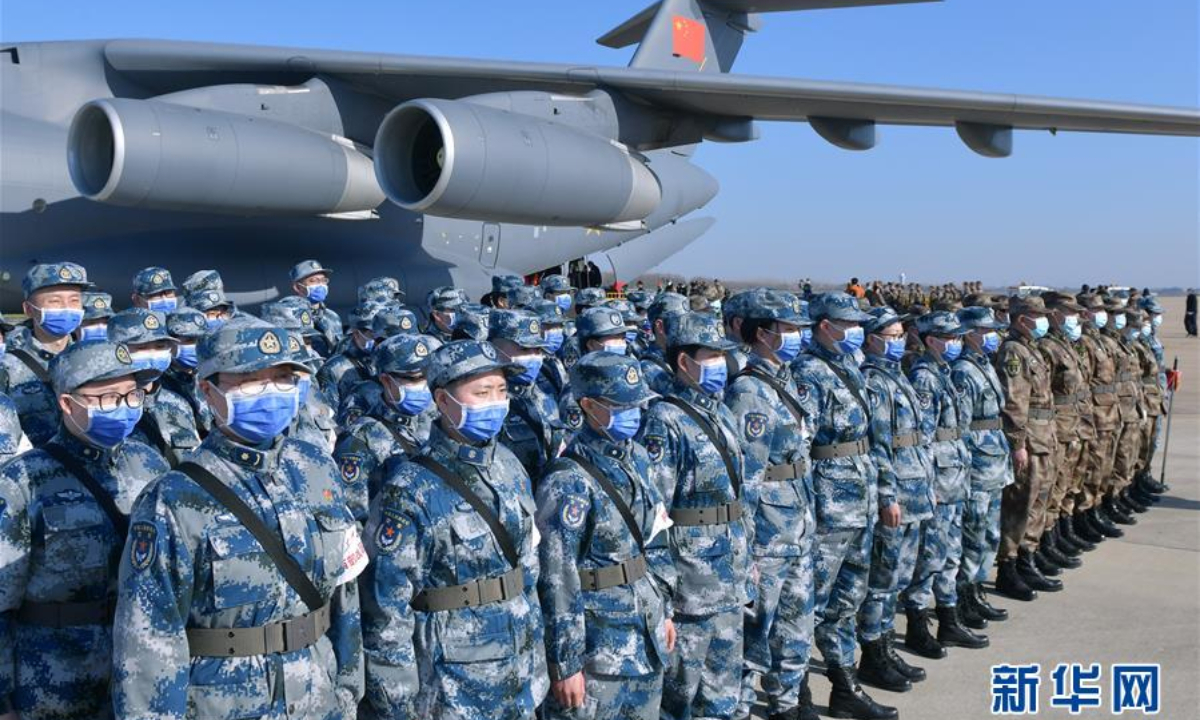 The Chinese Air Force has launched its fourth large-scale airlift of medical personnel and supplies to Wuhan on February 17, 2020. Photo: Xinhua
The Chinese Air Force has launched its fourth large-scale airlift of medical personnel and supplies to Wuhan on February 17, 2020. Photo: Xinhua 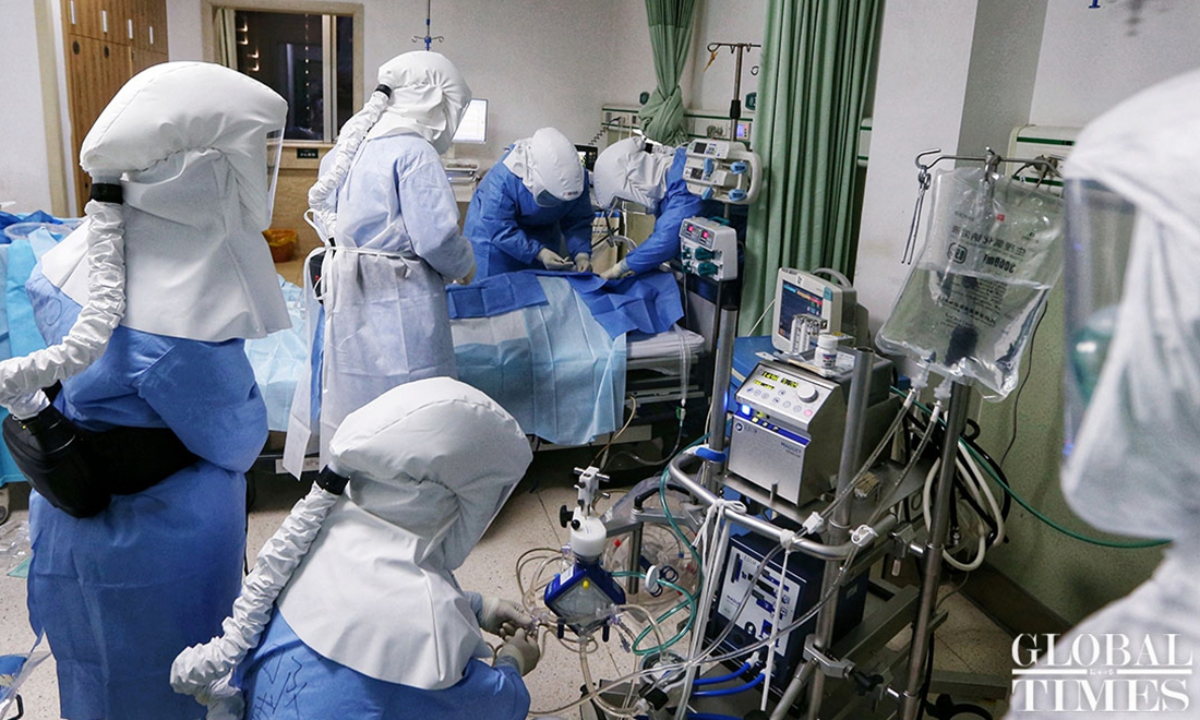 Jiangsu medical aid team performs ECMO operation on COVID-19 patient: On March 3, 2020, GT reporter in Wuhan witnessed an ECMO (Extracorporeal Membrane Oxygenation) operation in Wuhan First Hospital, conducted by the Jiangsu Provincial People's Hospital Medical Team. They successfully operated on a 70-year-old coronavirus patient in critical condition. The surgery took nearly 40 minutes. A doctor from the operation team said, "As long as the patient's heartbeat and respiration are still there, we will not give up easily." Photo: Cui Meng/ GT
Jiangsu medical aid team performs ECMO operation on COVID-19 patient: On March 3, 2020, GT reporter in Wuhan witnessed an ECMO (Extracorporeal Membrane Oxygenation) operation in Wuhan First Hospital, conducted by the Jiangsu Provincial People's Hospital Medical Team. They successfully operated on a 70-year-old coronavirus patient in critical condition. The surgery took nearly 40 minutes. A doctor from the operation team said, "As long as the patient's heartbeat and respiration are still there, we will not give up easily." Photo: Cui Meng/ GT 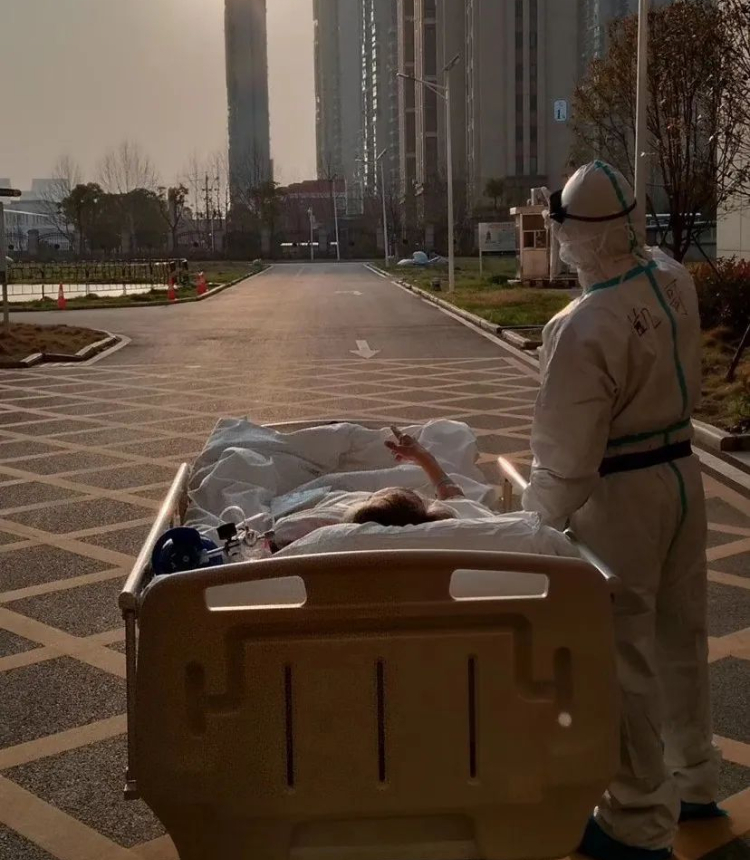 On the evening of March 5, 2020, Liu Kai, a member of the Hubei Medical team from Zhongshan Hospital Affiliated to Fudan University, stopped on the way to let an 87-year-old man who had been hospitalized for nearly a month enjoy the long-lost sunset while escorting a patient for CT scan in Wuhan, Hubei Province. Photo: Xinhua
On the evening of March 5, 2020, Liu Kai, a member of the Hubei Medical team from Zhongshan Hospital Affiliated to Fudan University, stopped on the way to let an 87-year-old man who had been hospitalized for nearly a month enjoy the long-lost sunset while escorting a patient for CT scan in Wuhan, Hubei Province. Photo: Xinhua 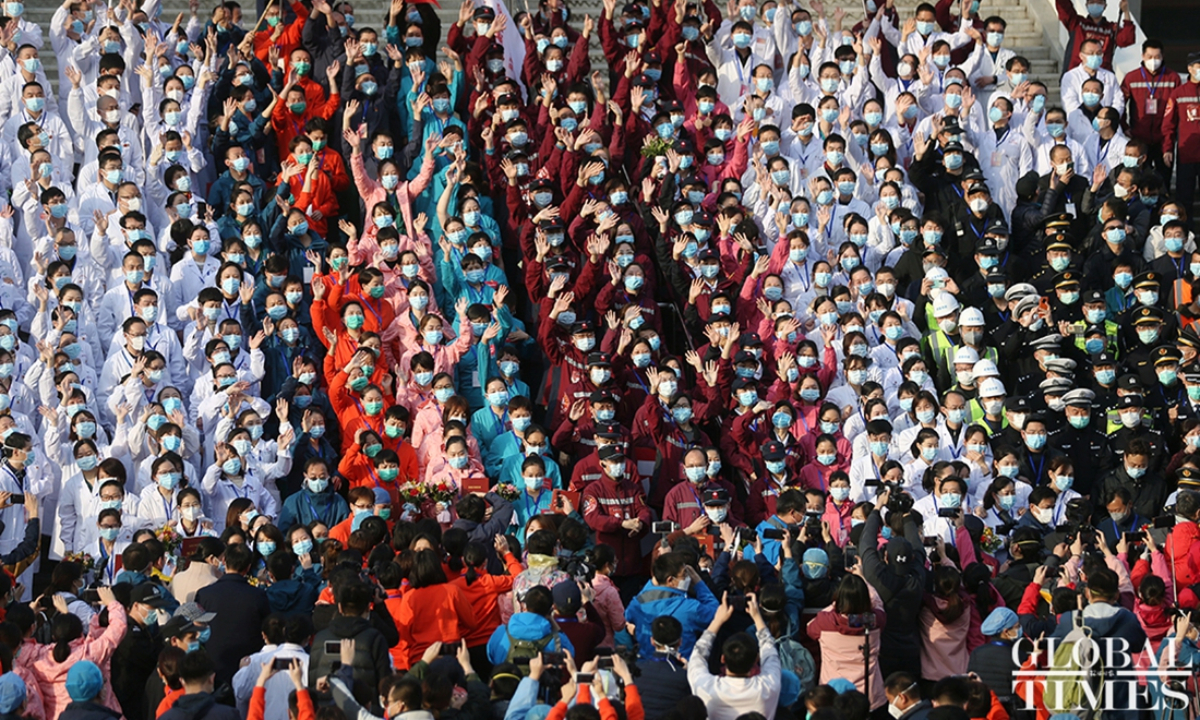 The temporary hospital of Wuchang, located in Wuhan, Central China's Hubei Province, closed on March 10, 2020. It received its first patient on February 5. During the 34 days of its operation, the temporary hospital took the responsibility for treating mild patients. Photo: Cui Meng/GT
The temporary hospital of Wuchang, located in Wuhan, Central China's Hubei Province, closed on March 10, 2020. It received its first patient on February 5. During the 34 days of its operation, the temporary hospital took the responsibility for treating mild patients. Photo: Cui Meng/GT 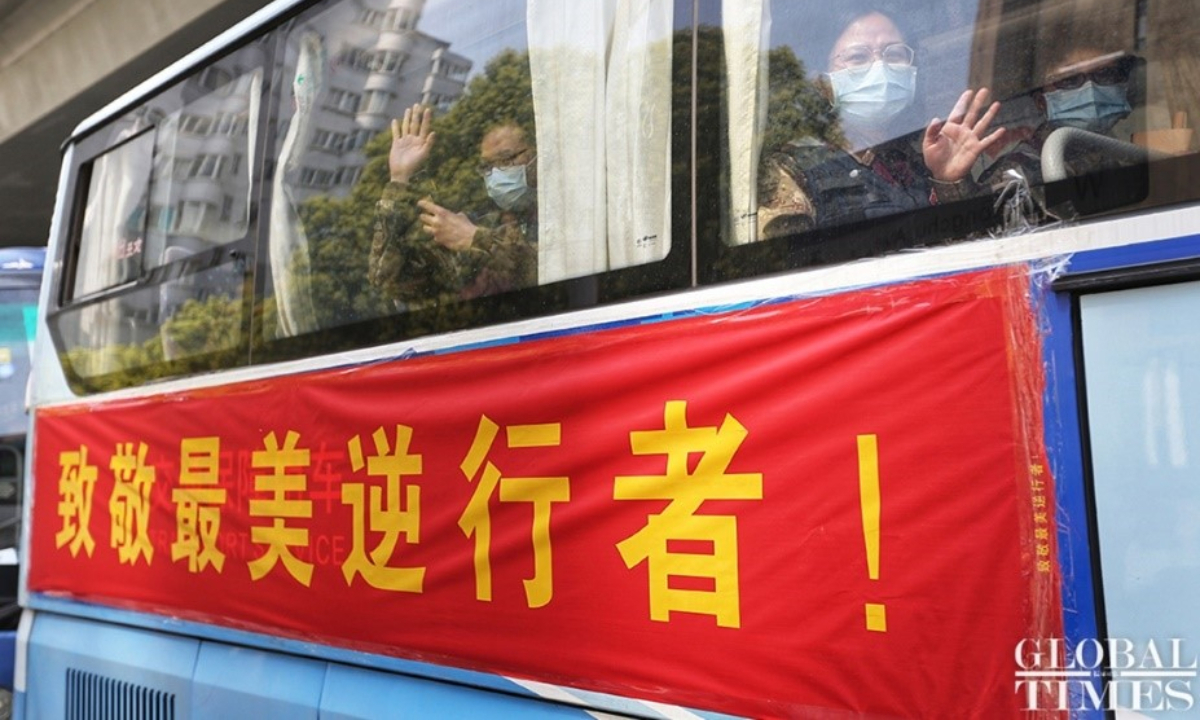 Goodbye heroes! The Zhejiang medical aid team, drafted in to assist in the frontline battle against the coronavirus in Wuhan, withdrew upon concluding their duties on March 19, 2020. Ahead of their departure, local volunteers of Wuhan organized a farewell celebration to honor their selfless service during the past months. Photo: Cui Meng/GT
Goodbye heroes! The Zhejiang medical aid team, drafted in to assist in the frontline battle against the coronavirus in Wuhan, withdrew upon concluding their duties on March 19, 2020. Ahead of their departure, local volunteers of Wuhan organized a farewell celebration to honor their selfless service during the past months. Photo: Cui Meng/GT 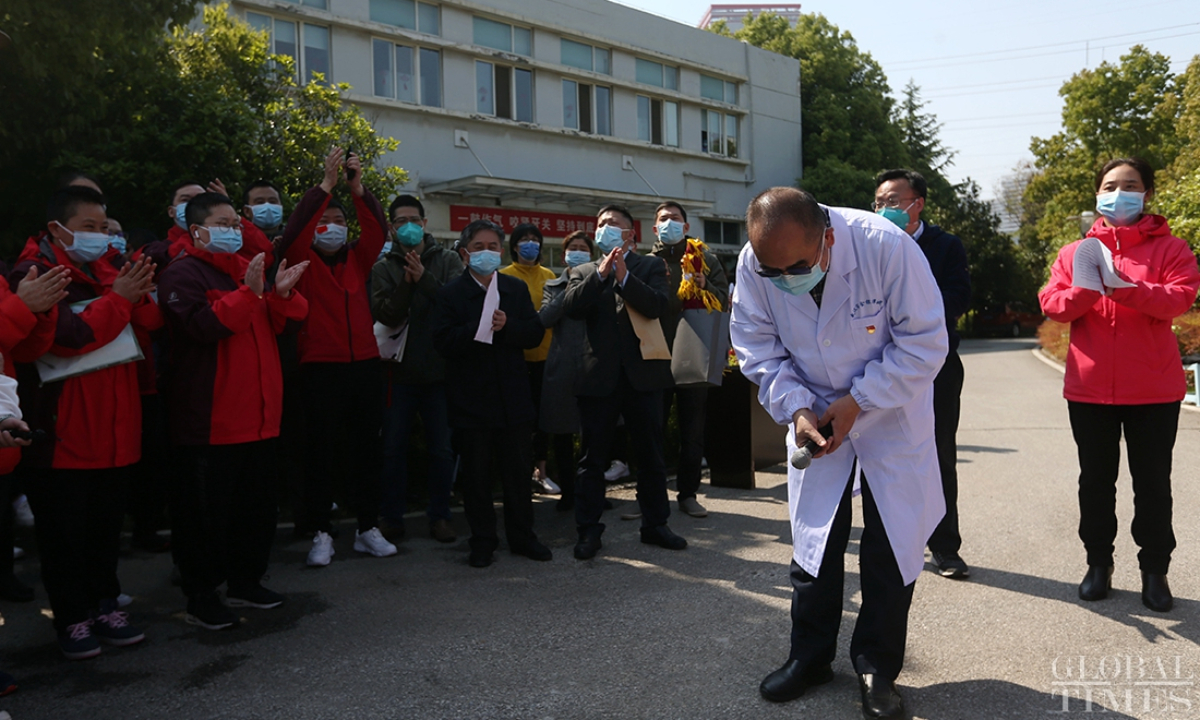 Wuhan hospital holds farewell ceremony for ICU support medics: Head of Wuhan’s Jinyintan Hospital, Zhang Dingyu, expressed his gratitude to medics from Jiangsu Province for their support at the hospital’s ICU wing during a farewell ceremony on April 13, 2020. Photo: Cui Meng/GT
Wuhan hospital holds farewell ceremony for ICU support medics: Head of Wuhan’s Jinyintan Hospital, Zhang Dingyu, expressed his gratitude to medics from Jiangsu Province for their support at the hospital’s ICU wing during a farewell ceremony on April 13, 2020. Photo: Cui Meng/GT  At 10 am, April 4, 2020, Wuhan Qiaokou police station traffic brigade's officers mourn COVID-19 victims on Yangtze River Bridge. Photo: Cui Meng/GT
At 10 am, April 4, 2020, Wuhan Qiaokou police station traffic brigade's officers mourn COVID-19 victims on Yangtze River Bridge. Photo: Cui Meng/GT 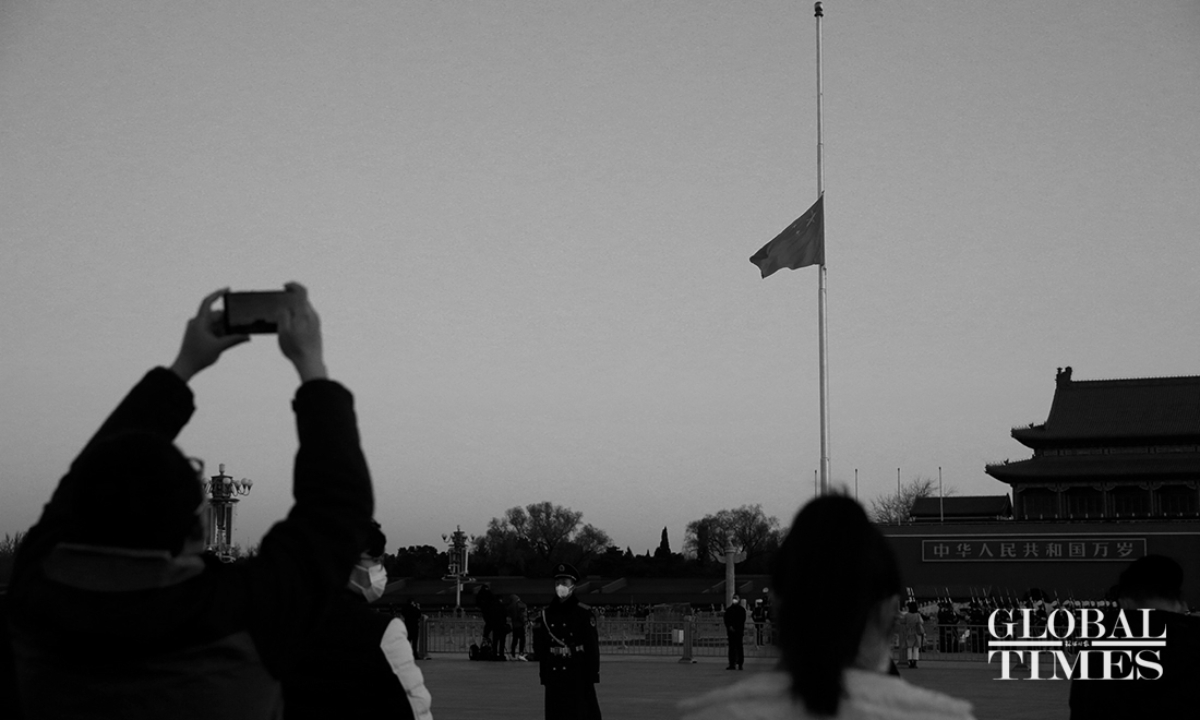 Chinese national flag flied at half-mast at Tian’anmen Square in Beijing on April 4, 2020 to mourn COVID-19 victims. Photo: Li Hao/GT
Chinese national flag flied at half-mast at Tian’anmen Square in Beijing on April 4, 2020 to mourn COVID-19 victims. Photo: Li Hao/GT 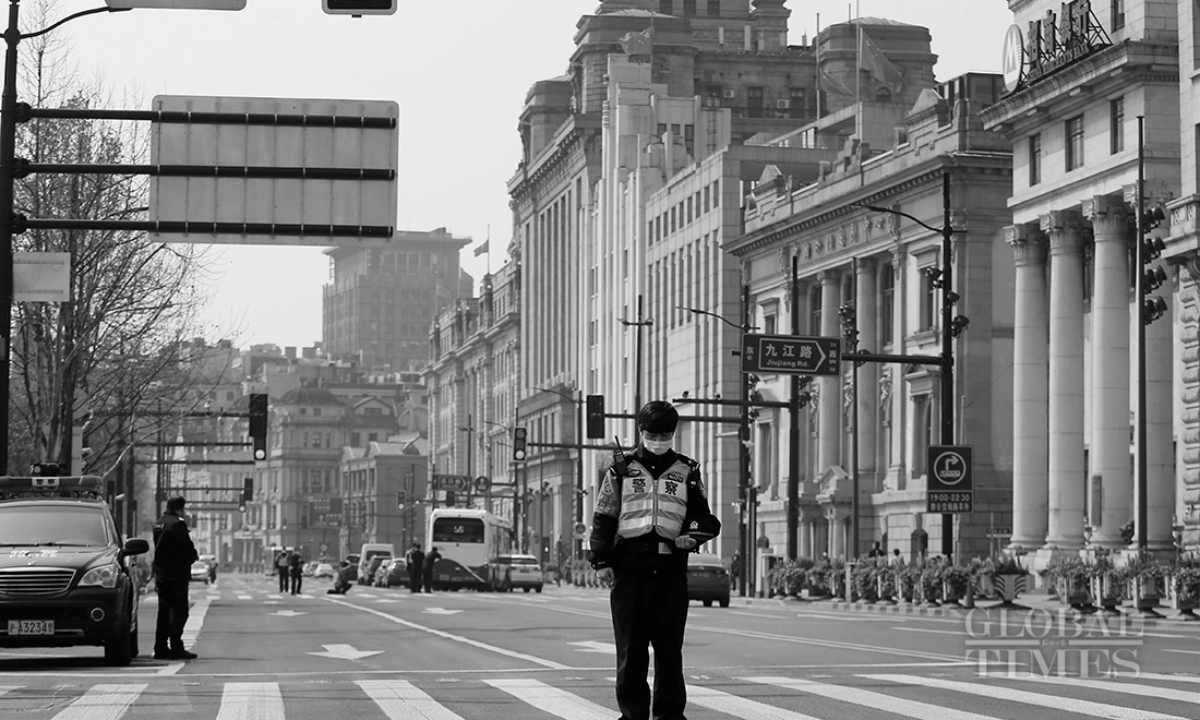 People in Shanghai pay a three-minute tribute of silence to COVID-19 victims at 10 am on April 4, 2020 as China held a national mourning for lives lost to COVID-19. Photo: Global Times
People in Shanghai pay a three-minute tribute of silence to COVID-19 victims at 10 am on April 4, 2020 as China held a national mourning for lives lost to COVID-19. Photo: Global Times 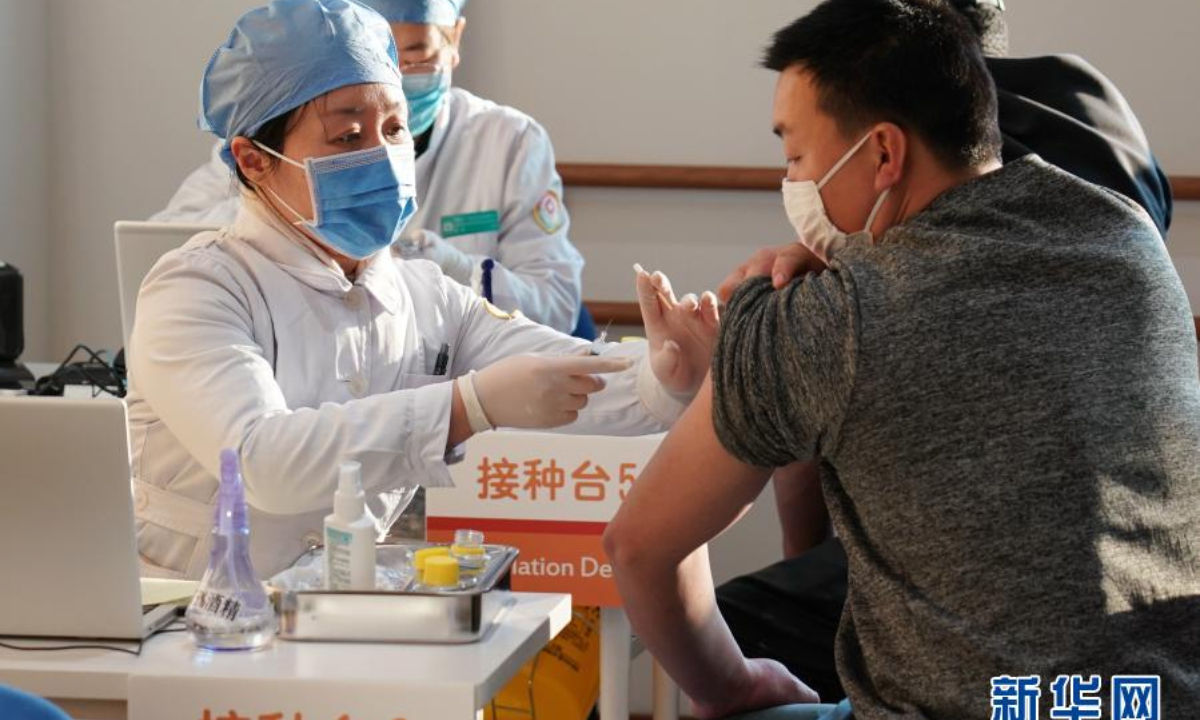 A medical worker administers a vaccine at a vaccination site at Honglian Community Health Service Station in Guanganwai Street, Xicheng district, Beijing, capital of China, January 3, 2021. Photo: Xinhua
A medical worker administers a vaccine at a vaccination site at Honglian Community Health Service Station in Guanganwai Street, Xicheng district, Beijing, capital of China, January 3, 2021. Photo: Xinhua 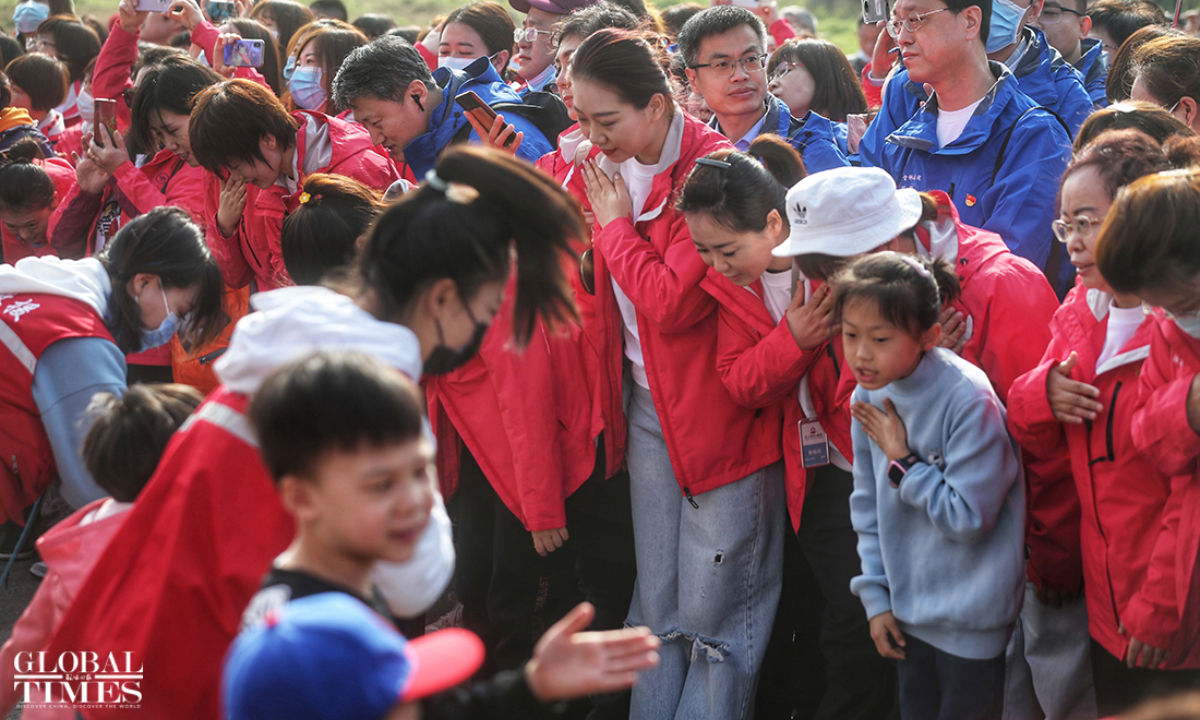 The Leishenshan (Thunder God Mountain) Hospital in Wuhan, Central China's Hubei Province reopened on March 14, 2021 after ceasing operations nearly one year ago, welcoming 400 medical workers across China and their families to visit the place where they had fought against the COVID-19 epidemic. Photo: Cui Meng/GT
The Leishenshan (Thunder God Mountain) Hospital in Wuhan, Central China's Hubei Province reopened on March 14, 2021 after ceasing operations nearly one year ago, welcoming 400 medical workers across China and their families to visit the place where they had fought against the COVID-19 epidemic. Photo: Cui Meng/GT 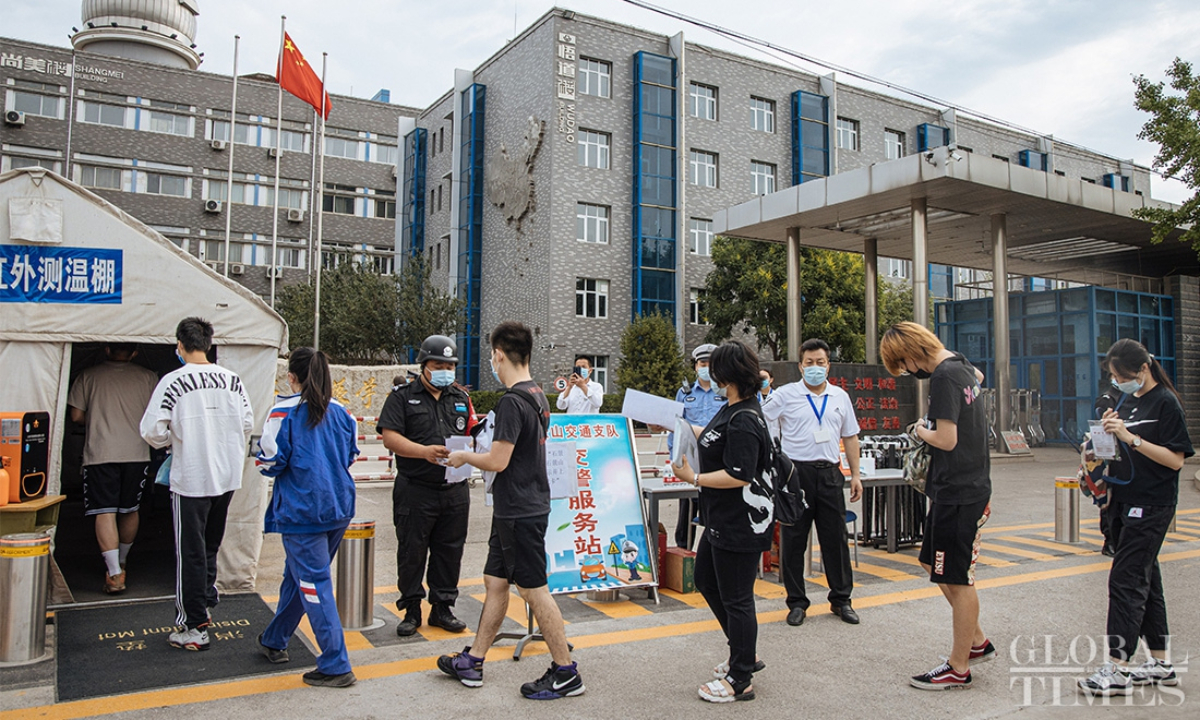 China’s Gaokao kicks off as scheduled despite sporadic COVID-19 cases in June 2021. Photo: Li Hao/GT
China’s Gaokao kicks off as scheduled despite sporadic COVID-19 cases in June 2021. Photo: Li Hao/GT 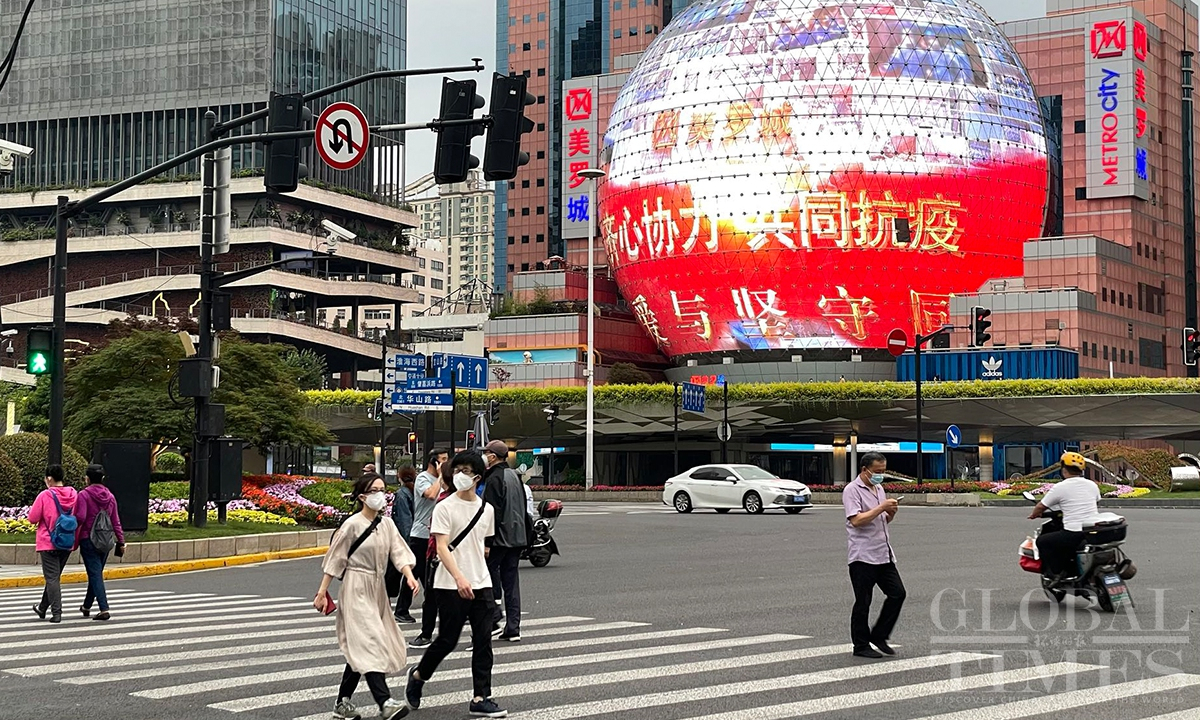 Shanghai is recovering from the COVID-19 pandemic as residents are allowed to leave their communities and business and production resume operation. The hustle and bustle is returning to the metropolis, which will resume public transport and allow vehicles on the road from June 1, 2022. Photo: Feng Yu/GT
Shanghai is recovering from the COVID-19 pandemic as residents are allowed to leave their communities and business and production resume operation. The hustle and bustle is returning to the metropolis, which will resume public transport and allow vehicles on the road from June 1, 2022. Photo: Feng Yu/GT 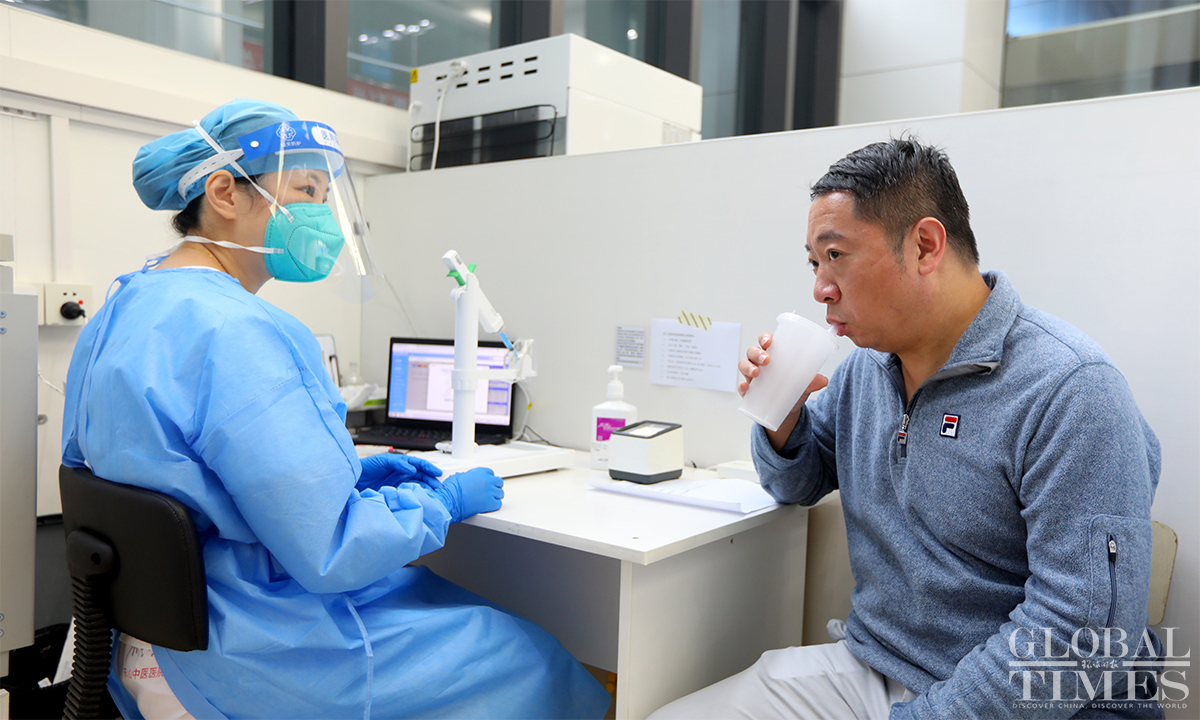 Shanghai became the first city in China to provide a domestically developed aerosolized adenovirus type-5 vector-based COVID-19 vaccine (Ad5-nCoV) as booster shot. In Tianshan Traditional Chinese Medicine Hospital in Changning district, Shanghai, the Global Times reporter saw a group of residents receiving the vaccination on October 26, 2022. Photo: Chen Xia/GT
Shanghai became the first city in China to provide a domestically developed aerosolized adenovirus type-5 vector-based COVID-19 vaccine (Ad5-nCoV) as booster shot. In Tianshan Traditional Chinese Medicine Hospital in Changning district, Shanghai, the Global Times reporter saw a group of residents receiving the vaccination on October 26, 2022. Photo: Chen Xia/GT 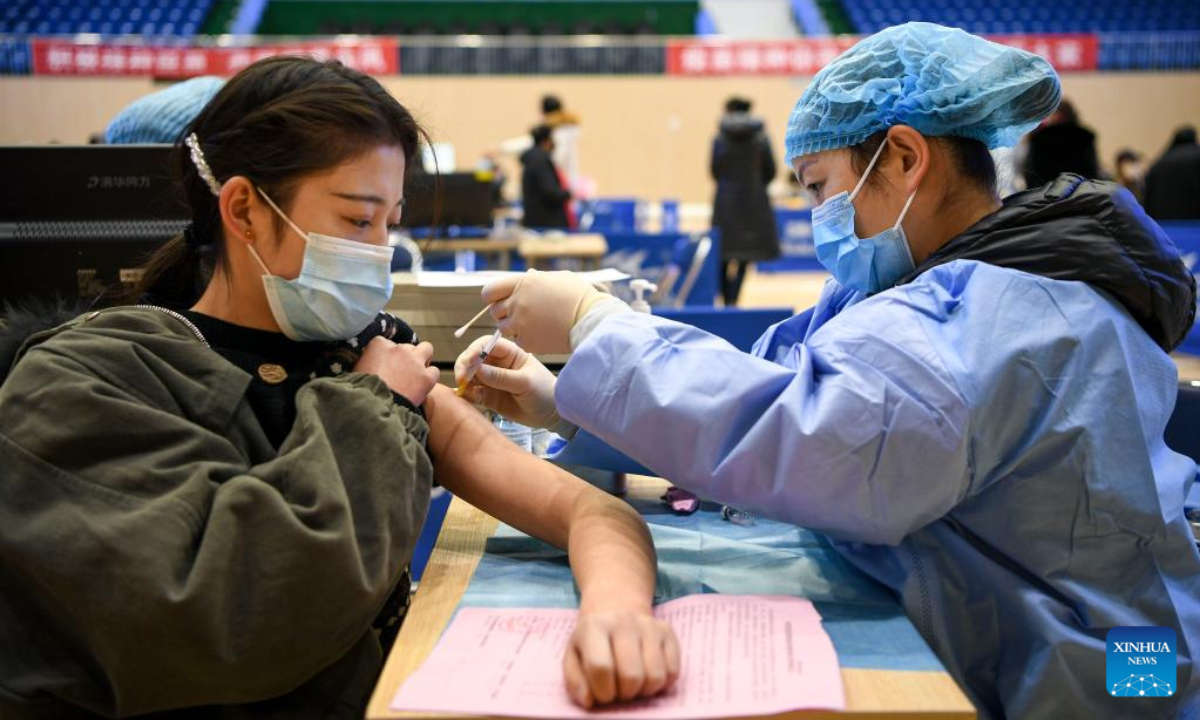 A local resident receives a dose of COVID-19 vaccine at a vaccination site in Yinchuan, capital city of Northwest China's Ningxia Hui Autonomous Region, January 2, 2022. As of January 4, 2023, more than 3.48 billion COVID-19 vaccine doses had been administered on the Chinese mainland, with a total of 1,309,886 million people having been vaccinated, and 1,275,855 million people having been fully vaccinated, accounting for 92.9 percent of the country's total population. Photo: Xinhua
A local resident receives a dose of COVID-19 vaccine at a vaccination site in Yinchuan, capital city of Northwest China's Ningxia Hui Autonomous Region, January 2, 2022. As of January 4, 2023, more than 3.48 billion COVID-19 vaccine doses had been administered on the Chinese mainland, with a total of 1,309,886 million people having been vaccinated, and 1,275,855 million people having been fully vaccinated, accounting for 92.9 percent of the country's total population. Photo: Xinhua




















